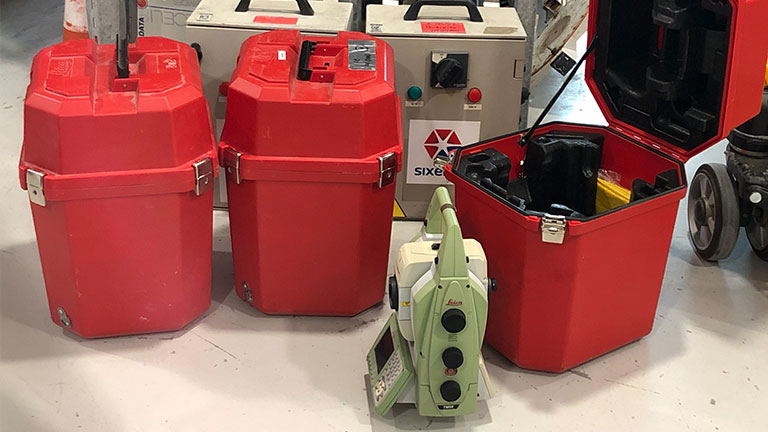Doing better with less
We rely on the circular economy to optimise the use of natural resources. We also ensure that we manage waste from our activity efficiently and responsibly.
By promoting reduction, sorting and re-use
We implement an approach based on the following pillars of the circular economy:
- Reducing the amount of waste generated (e.g. eliminating plastic containers in favour of reusable containers such as cups, water bottles, etc.)
- Systematic use of selective sorting, collection and recycling through authorised channels
- Reuse of equipment and worksite material and donating it to universities for a second life.
Reuse of monitoring sensors
At Sixense Monitoring, we systematically reuse our monitoring sensors.
At the end of a construction project where we deploy measurement systems, our sensors are recovered and sorted. Functional sensors are offered to our customers for a second life at a reduced price. The others go through an end-of-life process, i.e. collection and recycling.
85% of our sensors and reusable materials are reused at least once at Sixense Monitoring.
Donating our equipment to high schools and universities
 At Sixense Monitoring, when we replaced our topography equipment with newer models, we took the opportunity to donate our old equipment to the Vauvenargues high school in Aix-en-Provence (southern France) for use by students preparing for a vocational baccalaureate or diploma in electronics.
At Sixense Monitoring, when we replaced our topography equipment with newer models, we took the opportunity to donate our old equipment to the Vauvenargues high school in Aix-en-Provence (southern France) for use by students preparing for a vocational baccalaureate or diploma in electronics.
At Sixense USA, we have many data loggers in excellent condition, though less suitable for our current projects because they are bulky and consume a lot of power. These are intelligent data loggers used in environmental, industrial, structural, geotechnical, manufacturing and scientific applications. A new unit costs approximately $3,500. By donating these electronic devices (three to North Carolina State University, three to Oregon State University and five to the University of California, Berkeley), we are maximising their value by supporting university projects and reducing our impact on the environment.